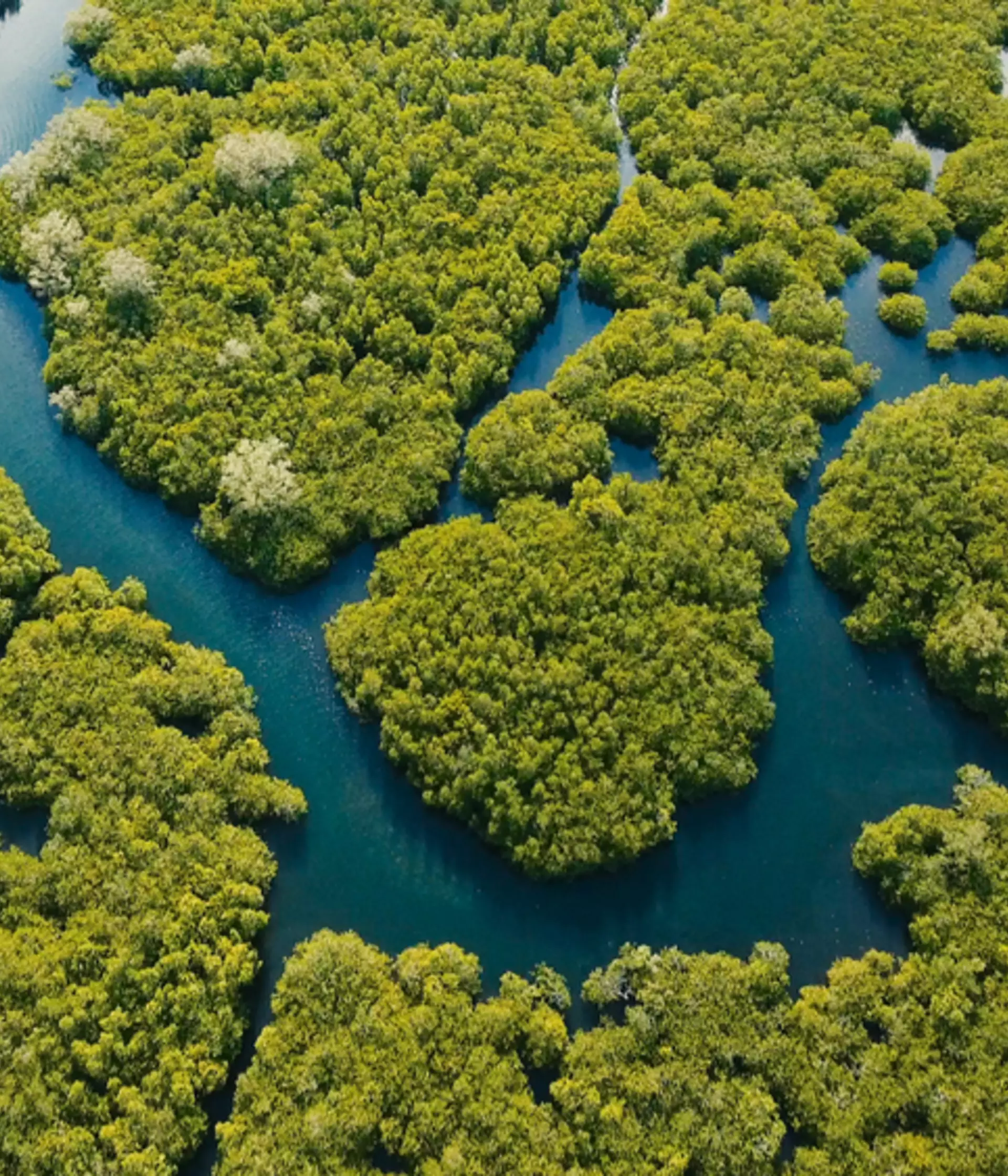Wildlife havens, carbon stores, storm defences, ocean purifiers – mangrove swamps are one of the hardest-working habitats on Earth, but they’re disappearing fast. Learn about the threats to mangroves and how we’re working to overcome them.
Why are mangrove forests important?
Mangrove forests, also known as mangrove swamps, grow along coasts and estuaries where tides rise and fall, providing a vital connection between terrestrial, freshwater and marine habitats. They support a huge variety of wildlife, from the mammals, reptiles and birds that live in or visit these forests to the fish, oysters, crustaceans and other aquatic species that find shelter among their flooded roots. An incredible 341 threatened species can be found in mangrove swamps, from tigers and sea eagles to seahorses and sawfish.
Mangroves’ complex root systems trap soils in place and help knit together the shoreline, reducing coastal erosion and protecting other marine habitats such as coral reefs and seagrass meadows from being swamped by sediment. Mangroves also help to filter nitrates, phosphates and other forms of pollution from the water, improving the clarity and quality of the seas.
Benefits of mangrove forests
Mangroves are important for supporting people as well as other animals, providing food security and income for millions worldwide. Over a third of small-scale fishers in countries with mangroves depend on these ecosystems for their livelihoods.
Mangroves also act as a first line of defence against erosion, storm surges and tsunamis, improving the resilience of vulnerable coastal communities in the face of climate change. They’re believed to reduce the flood risk to more than 15 million people and prevent more than £57 billion in property damages every year.
Meanwhile, mangrove swamps are up to four times more effective than terrestrial forests at mitigating the effects of climate change by absorbing carbon dioxide from the atmosphere and locking it away in their roots and soils.
Yet despite the enormous benefits of mangrove forests for people, wildlife and the planet, these ecosystems are seriously at risk. Two thirds (67%) of the world’s mangrove habitat has been lost or degraded, while more than one in six species found in mangrove swamps are heading for extinction.
Why are mangroves under threat?
Direct human impacts are thought to be responsible for over 60% of mangrove losses worldwide. Threats to mangroves include coastal development, logging, clearance for agriculture and the conversion of mangrove swamp to commercial aquaculture, such as fish and shrimp farming. In Southeast Asia, around 30% of mangrove loss is due to the aquaculture industry. One of our many conservation projects in the region involves restoring disused fishponds to mangrove swamps.
Other human-driven threats to mangroves include pollution. While mangroves can cope with, and even help filter out, a certain amount of pollution, too many agricultural or industrial chemicals in the water can kill them. Meanwhile, plastic pollution in rivers and oceans can accumulate in mangrove swamps, harming wildlife and even starving the trees of oxygen.
While mangroves provide invaluable protection against climate change, they are also vulnerable to its impacts. Mangrove conservation research we carried out in Mozambique confirmed that sea level rises and tropical storms were a serious threat to these ecosystems.
Our mangrove conservation efforts
There’s still hope for the planet’s mangroves. As the benefits of mangrove forests become better understood, more habitats are being protected, and global mangrove losses are slowing. Given half a chance, these resilient forests can grow back. But more needs to be done, and ZSL has long been working to safeguard their future.
Our current focus is on mangrove conservation in the Philippines, a country that has lost around half of its historic mangrove cover and remains vulnerable to typhoons. Alongside replanting an area of mangroves the size of 1,260 football pitches, we’ve also helped to get mangrove swamps included in 12 marine protected areas (MPAs). With your help, we can continue to protect these extraordinary ecosystems long into the future.
